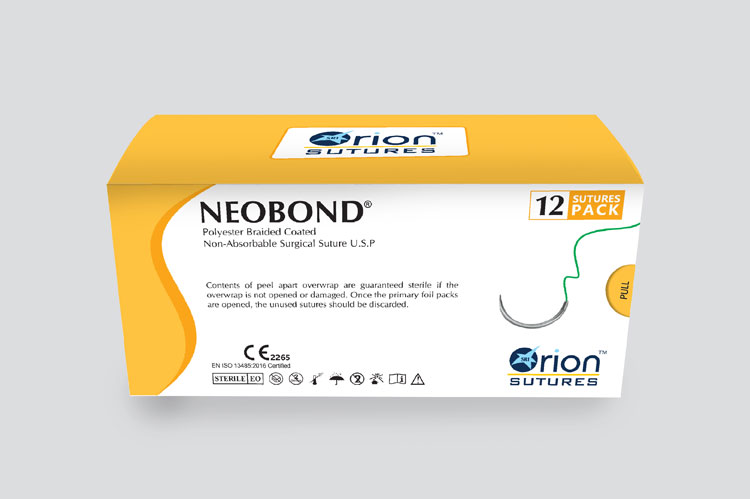Polypropylene suture isone of the names in the world of sutures, which has its long-term tensile strength and low tissue trauma, has grown in popularity for use in vascular and cardiac surgical procedures.
However, there have recently been some concerns raised about its safety. We recently had two cases of polypropylene fracture, one early and one late after surgery.
Orion Sutures is one of the names in the list of the top suture companies in India known for the best supply of sutures.
- Why are polypropylene suture safe in all situations?
The comparison and collation of these two cases with other reports leads to the conclusion that polypropylene suture is safe in most situations, but caution must be exercised to avoid instrumentation trauma and kinking stresses at knots, which likely explain the majority of reported cases of polypropylene failure.
Furthermore, polypropylene should probably not be used in graft-to-graft anastomoses where the constant sawing stresses of two rigid structures appear to result in an excessive incidence of late suture fracture and false aneurysm formation.
The tissue-to-graft for better growth at synthetic anastomoses does not produce sufficient tensile strength to withstand arterial pressure, all synthetic vascular graft anastomoses, patch closures, and valve implantations rely on suture line integrity for the patient’s lifetime.
- What are monofilament polypropylene sutures?
Since 1969, monofilament polypropylene suture has been commercially available and has steadily grown in popularity among cardiac and vascular surgeons for tissue-to-tissue and prosthetic-to-tissue suture lines.
Polypropylene has several advantages, including excellent tensile strength retention with no biodegradation, a low coefficient of friction for less tissue trauma during suturing, low tissue reactivity, low thrombogenicity, less chance of infection, and some evidence of less intraoperative blood loss.
When your doctor sutures a wound, he or she will use a needle connected to a length of “thread” to close the wound.Doctors will use sutures to close wounds to your skin or other tissues.
- What are the types of suture materials?
To begin, suture material is either absorbable or non-absorbable.
- Absorbable sutures do not need to be removed by your doctor. This is because enzymes found in your body’s tissues naturally digest them.
- Non-absorbable sutures must be removed by your doctor at a later date or, in some cases, left in place indefinitely.
- Second, the suture material can be classified based on the material’s actual structure. Monofilament sutures are made up of a single thread. This makes it easier for the suture to pass through tissues.
- Braided sutures are made up of several small threads that are braided together. This can result in improved security, but at the expense of an increased risk of infection.
- Third, sutures can be classified as either natural or synthetic in nature. However, because all suture material is sterilized, this distinction is meaningless.
- These sutures can all be used for soft tissue repair in general, including cardiovascular and neurological procedures.
Hence the suture companies in Indiaare working hard to offer with all kinds of features that can keep up with the standards of surgical sutures.
- Parting words
Suturing materials are available in a variety of sizes and shapes. The doctor will select a material that is suitable for the wound or procedure.The various types of sutures can be classified in a variety of ways.

